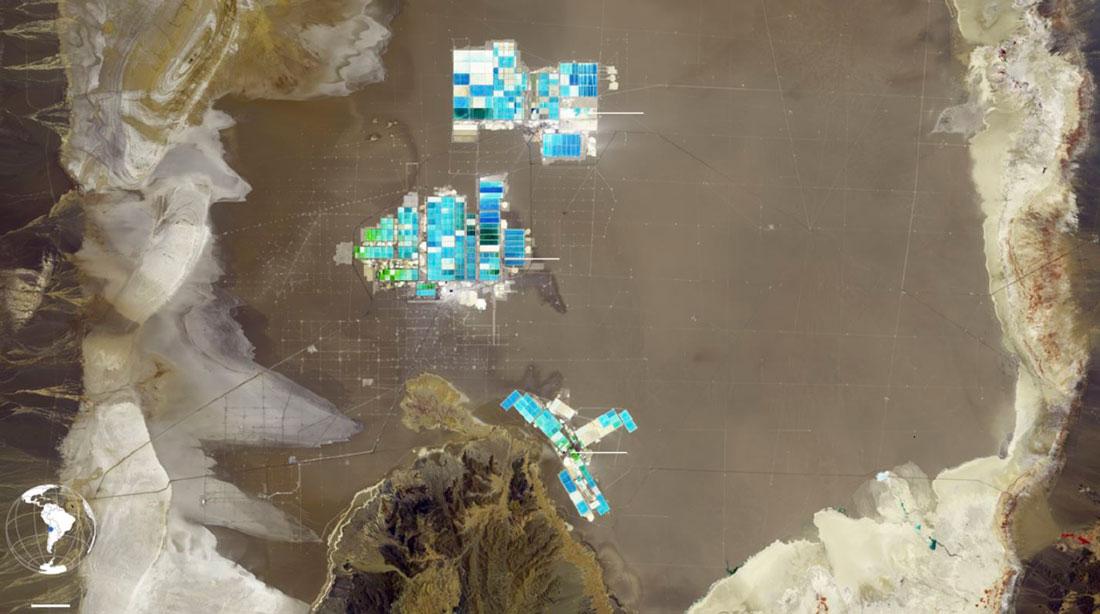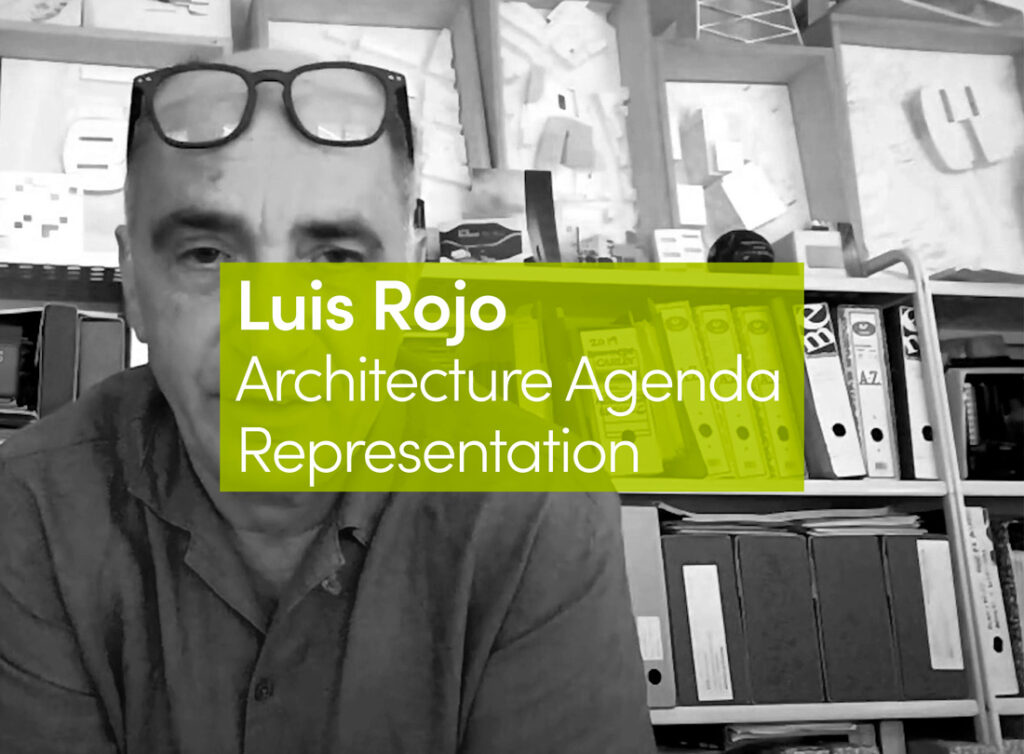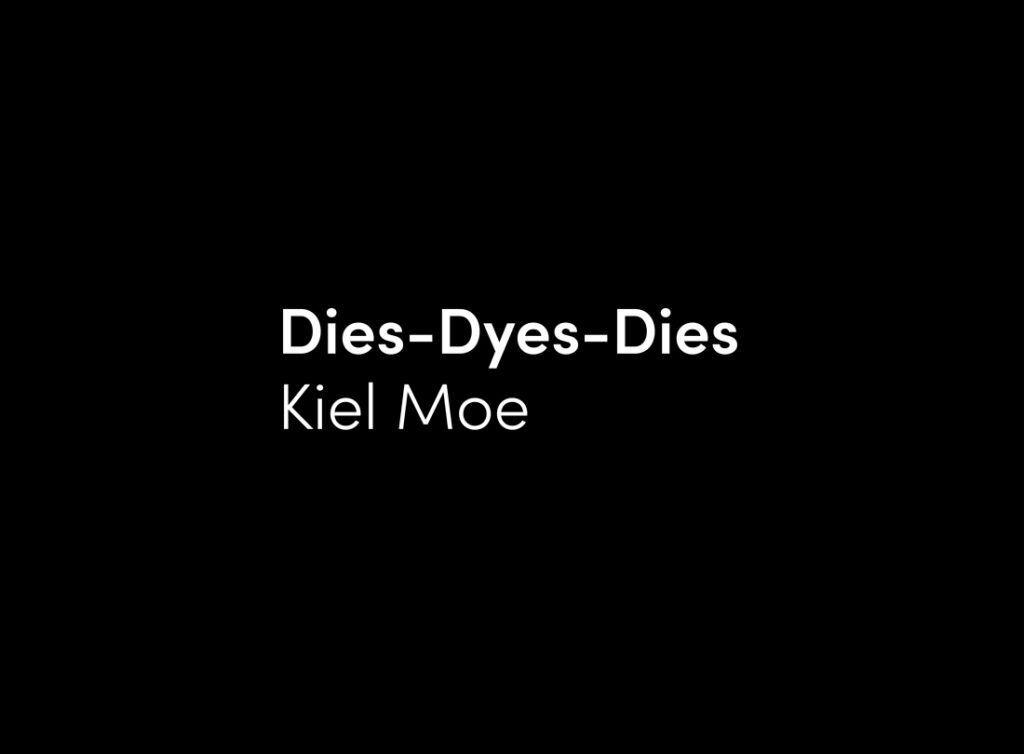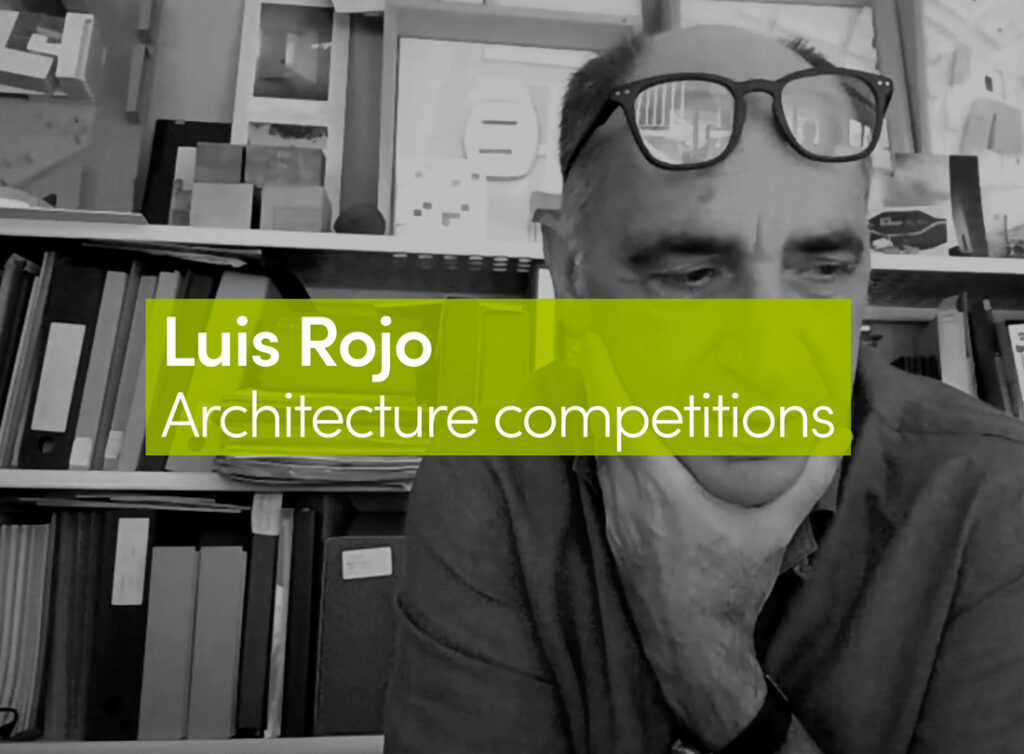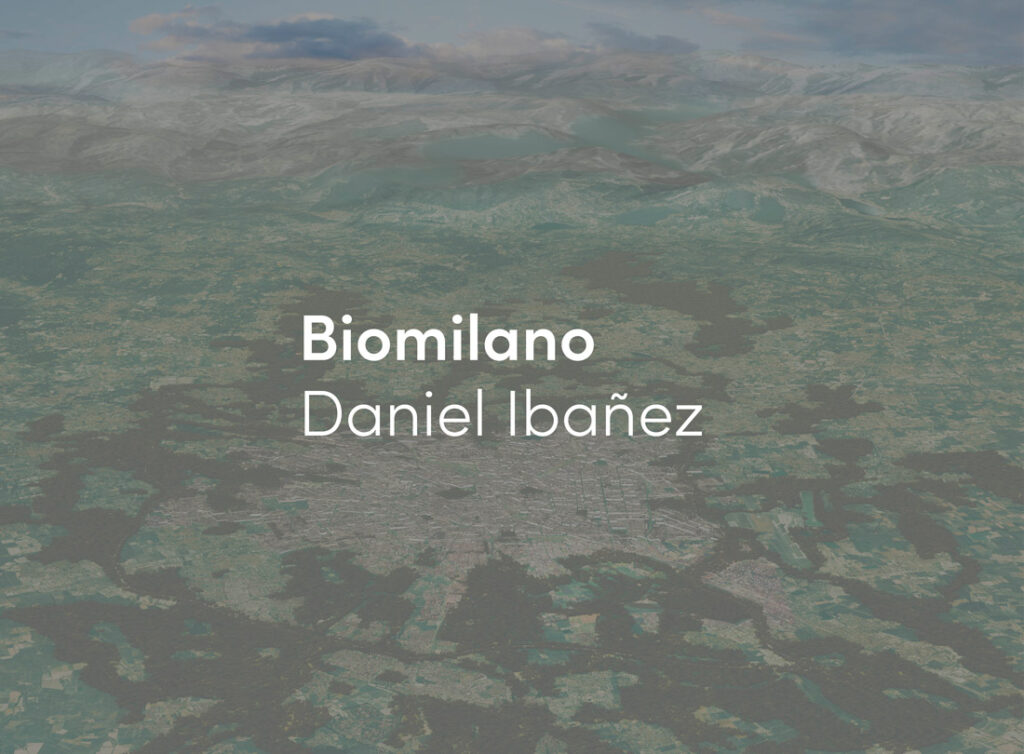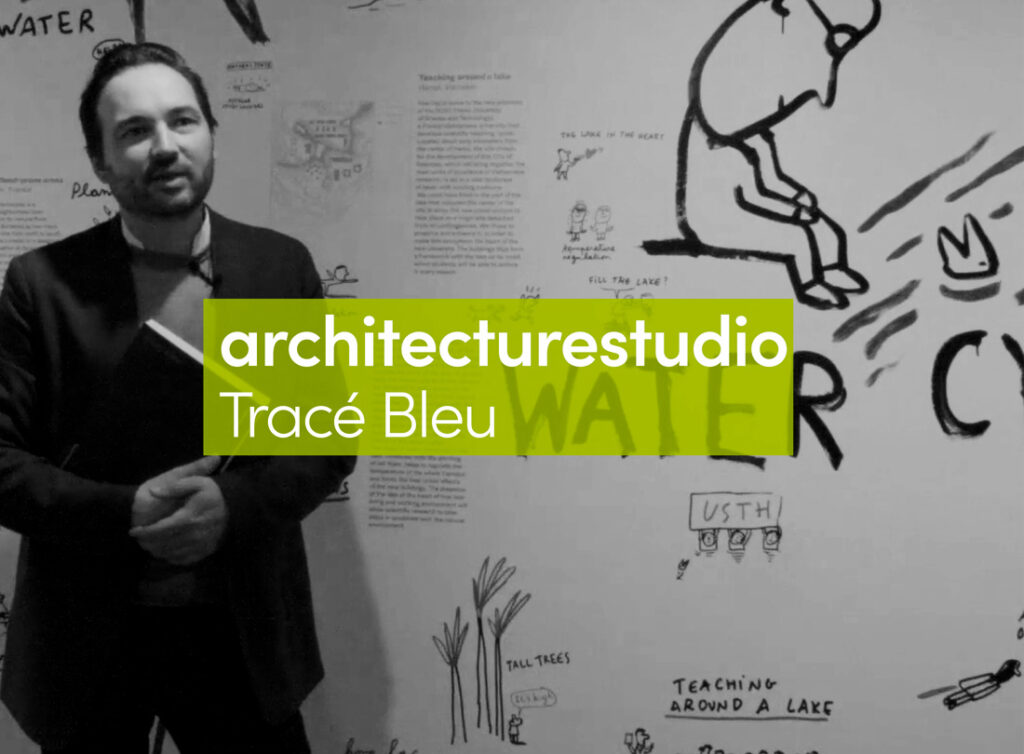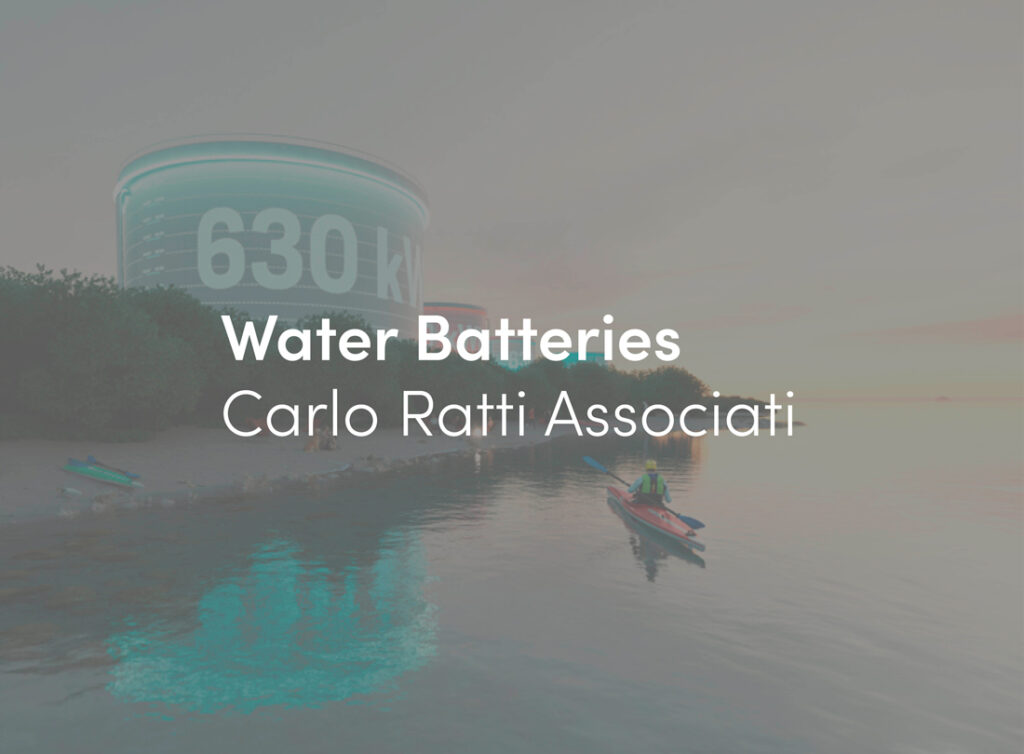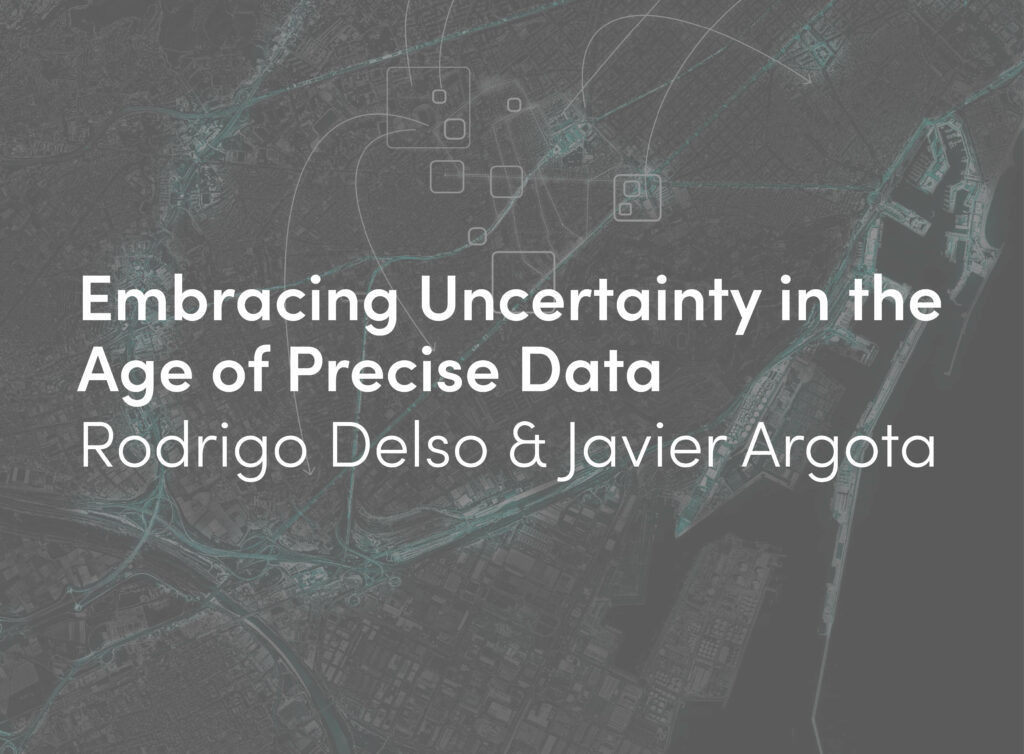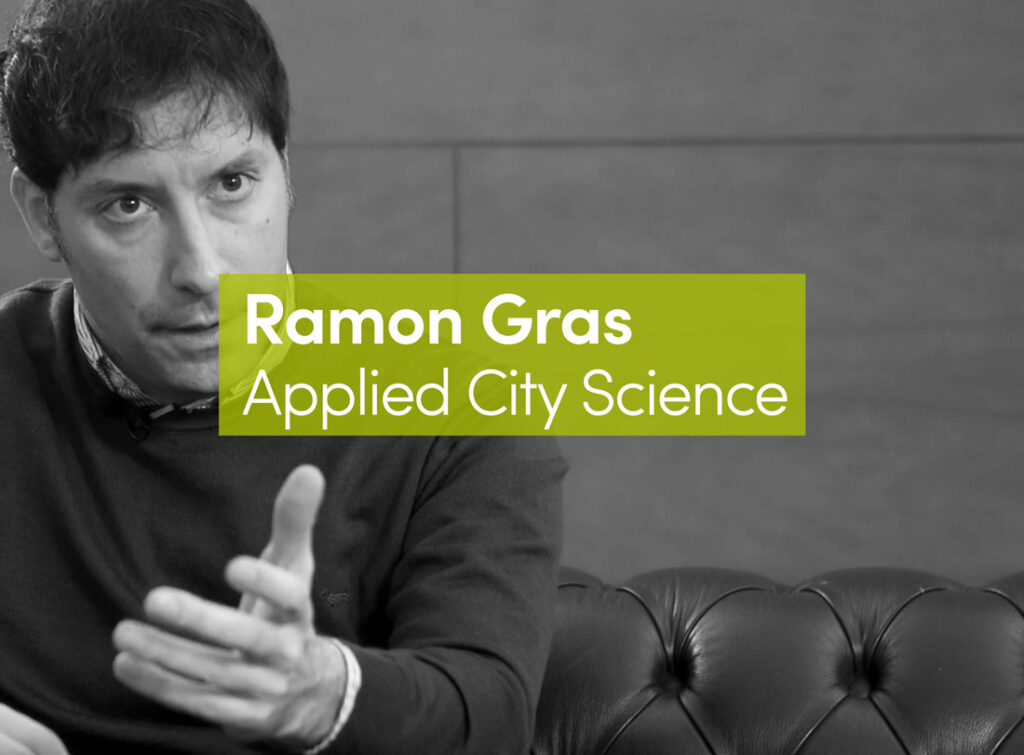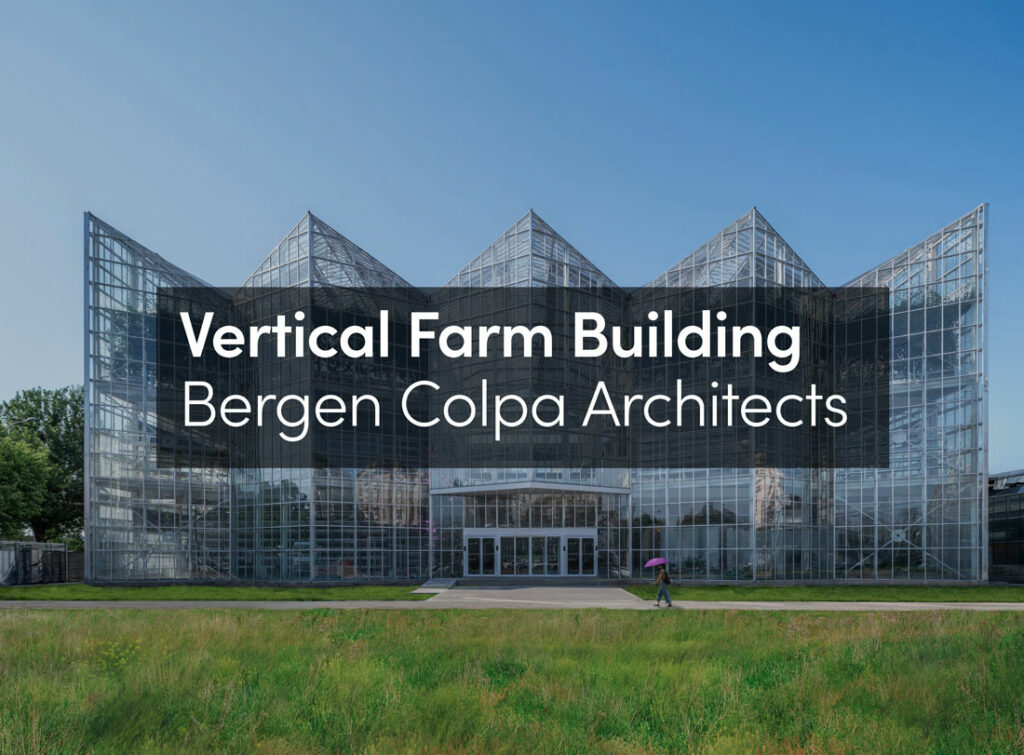Unlike globalization, planetarity is not just a totality, but rather an ontologically open relationality, that suggests a new way of comprehending the natural. Within that mesh, it is essential to read the electrical, and the electronic – including machines, our brains and all other sensing, processing, motor, kinetic and charged matter – as natural and ecological. Hence, the argument for a planetary-scale nervous system.
Lithium Ponds, or brine pools, and processing areas in the Atacama, Chile. Image retrieved from https://energymetalnews.com/2018/10/19/lithium-miners-dispute-reveals-water-worries-in-chiles-atacama-desert/
Everything Is Ecology
Apparently, the loop is this: from geology, emerges biology, from which intelligence arises, and in turn, then creates technology that consumes all the above to create new geologies, biologies, and intelligence simultaneously. In a nonlinear, irreversible manner, we have arrived at a point of an ever overwhelmingly penetrative mode of causal contingencies that form a skin-deep hyper-crust illustrated as the Anthropocene.
Classically speaking, the natural is whatever exists without human intervention. Strangely enough, we always hit the brakes when we arrive at humans, excluding them from what nature is. So, nature is commonly looked at as that holistic phenomenon of the physical world, inclusive of all geologies, living things, and all matter – as opposed to the human species.
Examined closely, that is what the anthropocentric drive has dwelled on: the sheer space between man and nature, or, more precisely, an unceasing fantasy to overpower nature. The consequences of this attitude include an alienation from the natural, on the one hand, along with an unwillingness to effectively look at what our consumer-based economies have produced. As Timothy Morton puts it, “Anthropocene is the first fully anti-anthropocentric concept” – a state that demands that we exist not just as a part of nature, but as nature itself, a way in which nature is manifested. This disposition allows for an understanding of the human species as a hyperobject, accessed through its technosphere’s footprint which spans time and space.
Existence as a hyperobject implies an object in the first place, an object among other objects. That first implication alone, derived from the OOO, intrinsically implies the impossibility of accessing the object. Accessibility – to the object – becomes permanently faulty and impossible. Being an object, inherently inaccessible, acquires a polyvalent placeholder to drop out our species’ binary gates, to what is and is not human. Moreover, this could aid in the negation of all user-scale pragmatic situations humans have created to manipulate power structures within the human species and the ongoing fantasy of overcoming nature.
Design is, and has always been, redesigning the human, as Mark Wigley and Beatriz Colomina celebrate in their book Are We Human? In any discourse, it is that question that always turns the game: what is the one thing without which, had it not existed, the whole discourse would have fallen apart? If there is one thing that could potentially keep us human, it is that polyvalent placeholder. We stay human not because we don’t change, or because the definition of what is human has changed, but precisely the opposite: because of that looseness, that versatile placeholder, rooted in potentiality and the mutable nature of living beings, namely humans. Nature can only exist with that capacity to be redesigned.
We have moved into a position, in which, rather than only being influenced by or mimicking nature, we have designed nature. The least we can harvest from the Anthropocene is the hyper-object we have created: a hyper-body that credits the human technosphere as a co-author. And it is not necessarily through direct creation; redesigning the natural can be achieved through enframing, hybridizing, digitizing, manipulating, etc. what actually exists. These phenomena are ways of designing and manipulating what is already there to create new conditions, which then become our blueprints.
This stratum is (part of) culture; it is part of the sum total of human production. It is part of every iPhone, every online interaction, every flight we take, and every battery we use – a weird object that exists in its own right, always trying to acquire more space, making its presence more obvious, keeping us uneasy. It is us! The dark side of us we had better ignore, and thus decide not to look at. The first step in dealing with any situation is the very action of diagnosis, which without there is no driving force for any process that may come after.
Throughout the process of creating our “junkspace” and space junk, we have not only produced debris but managed to create a new condition using technology. One aspect of this is giving the planet new organs, new input channels that move us toward the current condition of sentient planetarity. New users, in other words. Planetarity – unlike globalization – primarily denies the dialectic of the human and the natural. It is, at its core, the conceptualization of the singularity and inseparability of the history of the human, the artificial, and the natural.
Just as we have redesigned our bodies, we have redesigned the planet. We have simultaneously invented new senses for both. Now playing God, we have failed to make the link between a network of planetary sensors and any actuators. This boils down to that hyperobject sensing, with no action, primarily for an absent planetary-scale geopolitical drive. Sentience is not only the input side of the story; it also includes the perception process, which can be only achieved thanks to a computational and technological capacity that is still expanding – which in turn stands for a gigantic chunk of that “other nature”.
 Satellites, rocket bodies, and space debris. Retrieved from http://stuffin.space/
Satellites, rocket bodies, and space debris. Retrieved from http://stuffin.space/
Ecology as a Comprehension Method
While it almost feels like the whole universe has been designed by a creator for the comfort of the human figure, we know that this is just the story we have second-handedly invented to silence our own incompetence, buttoned up in egotistical anthropomorphic appropriations. Recalling Žižek: “Catastrophes are part of natural history. The fact that ash from a modest volcanic outburst in Iceland grounded most of the planes in Europe is a much-needed reminder of how we, humans, with our tremendous power over nature, are nothing but one of the living species on Earth, depending on the delicate balance of its elements.”
Aside from uniting theories and concepts such as biophilia, we have classically situated nature as the other. We have constructed a virtual much-needed buffer zone to stay away from the ecological. We have never been ecological in our intentions. We seemingly demonstrate a limited perceptual capacity to grasp ourselves as part of the planetary. It is not ecology that we are short at grasping, but rather our yield as something ecological. Overcoming that anthropocentric rhetoric, is it even possible not to be ecological? The ecological, here, is not a greenwashing micro-activist’s dream, nor the romantic conception of nature as the image of a beautiful green picturesque countryside, which is, on the one hand, false, and, on the other, with a change of the filter through which we understand the world, does not negate the current state. Not associated with rainbows, butterflies, or trees planted on top of a skyscraper, ecology incorporates the biotic and abiotic, the chemical, biological, geological, etc. Ecology combines the biosphere, the technosphere and all other spaces that make up our world. Everything is ecology, everything is economy, ecology is economy.
If catastrophes are part of natural history, then, why can’t cities be? The city, arguably the largest single creation of humankind, is the last territory where “the natural” is infiltrating our previously conceived human-only environments. At the time we started incorporating abiotic flesh into our bodies, rolling down the voluntary extinction hill, we began introducing “ecological” concepts for better, cleaner, more sustainable, healthier, more resilient, organic, etc. cities. Nevertheless, I would like to situate bio-receptivity on one hand and the artificial on the other. Cities, at best, are natural environments – artificial natures. They are not unnatural, but rather a designed natural, a material reconfiguration of a partial planetary resource for a new space of interaction among all actors in that environment and the planet as a totality.
Biology tends to be the number-one contender when talking about ecology, the most intuitive area of knowledge to turn to, since ecology looks green at first thought. Chemistry might come to mind if we spend more time on this, as we immediately think about the dark side. Biology for the chlorophyll mind maps, the colors of hummingbirds and the breathtaking views of waterfalls. Chemistry for polluted waters, viruses, nuclear waste spills, and all the other natural processes. Ecology is more than that, obviously; not mentioned above, the physical world is interchangeably what nature consists of. Our planet is where all these ecologies take place. As the sentient planetary emerges, if ecology has to do with the physical world and the interactions that take place between its nodes, shouldn’t we investigate how all these interactions happen?
As we tend to think about ecologies, I propose two key ideas within this framework. The first is the question: What about electrical ecologies? Are these possible ecologies? And the second, following this reasoning and the conception of all intelligence as planetary intelligence, puts forward the idea of a planetary nervous system, a mesh of sensors, processors and actuators that could possibly attempt to encapsulate an optimum planetary cognification. Electronic and electrical objects share this planet with us; they, out of the blue, share our bodies with us! Cities are agglomerations that cannot be conceived as ecosystems excluding the electrical and the electronic.
FAST: Five-hundred-meter Aperture Spherical radio Telescope – the world’s largest filled-aperture radio telescope. Photo taken on July 3, 2016, the day the huge dish’s last panel was installed. Image: © Xinhua
Electrical Ecologies
Enmeshed within our technosphere, it recedes into the inconceivable background, which only comes to the forefront when things “go wrong”; it becomes the natural environment. We have been, at best, freaked out by the uncanny valley – that disturbing balance between appearing to be human, or alive, and the emotional exhaustion and unsettling state that we’re moved to. Little have we thought of how we appear to these objects, how weird we are in their “eyes” or, if we take it one level up, how we might coexist with the inverse uncanny valley – i.e. the image of us, through the gaze of that artificial other. We are being looked at too; it is the lack of bidirectional perception that keeps us at that distance from the image of us. That interaction, alarming and unsettling as it seems, signals a glimpse of coexistence in an ecosystem of the biological and the mineral and the electrical. Whether biological neurons or silicon ones, it is the electrical circuitry that runs the show.
Added to the very important manifestations of advancements in technology is what we have arrived at in a specific field, namely neurotechnology. Neurotechnology widely deals with the brain as an electrical entity, which is the common ground it shares with all other electricity-based technologies. Communication between machines and our brains has been made possible through various signal-harnessing techniques (invasive and non invasive) using a number of communication methods and protocols. “What I cannot create, I do not understand,” Feynman wrote once on his blackboard. As mentioned previously, creating, here, is possible through various forms, including rederiving, which is what Feynman meant. That has been our journey trying to understand the brain through creating a comprehensive replica of it – i.e., simulating it. A lot of branching from this path takes place, from trying to biologically replicate the building blocks of the brain (i.e., lab-grown neurons that show a collective behavior) or chemically replicate chemical exchanges in the brain, or try to make the ultimate link between artificial brains and human brains.
Looking at the active landscape of neurotechnological production, accessing the brain is becoming increasingly cheap, precise and technically accessible, allowing the integration of the human brain into a connected world of electrical objects. Artificial computers and the brain differ in how they function. Unlike classical computation, which sprouted as a rule-based problem-solving mechanism, the brain is a generalist and of a fundamentally different nature. Running at around 20 Watts (the power required to run a lightbulb) that lump of squishy matter seems physically alien to silicon chips, and, thus, a more efficient way of making the link might be a future breakthrough.
Neuromorphic computing is an emerging field, which simply evaluates a current need for translating how human brains work into silicon. So, rather than following classical computing mechanisms, the goal is to create an artificial replica of the brain. Recently, by using standard internet protocols, scientists have established a “chain of communication whereby an artificial neuron controls a living, biological one, and passes on the information to another artificial one.” Well, welcome to the future! When it comes to thinking about a planetary nervous system, in addition to all the senses, platforms, and infrastructures, only one title comes to fore: “Electrical Ecologies”. Electrical ecologies are those ecologies that are primarily comprised of electrical/electronic objects, such as our brains, nervous systems, billions of transistors all over the globe, machines and every other object.
